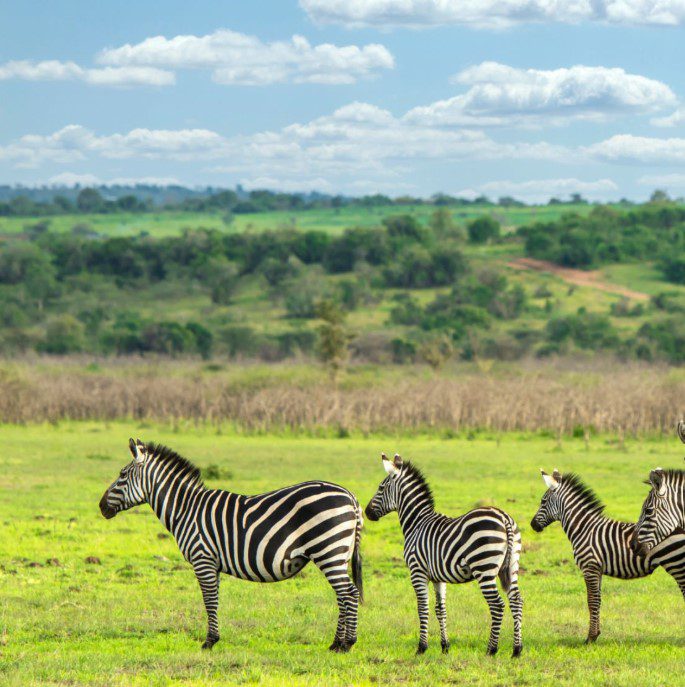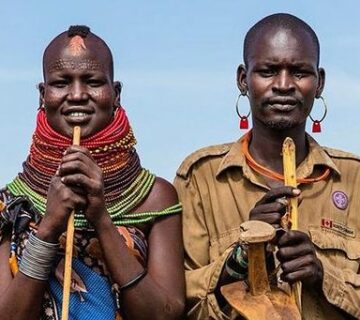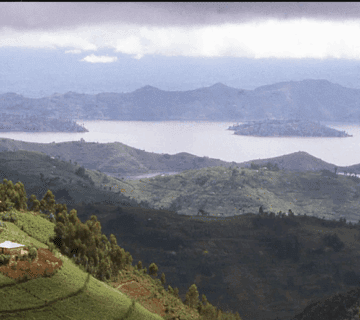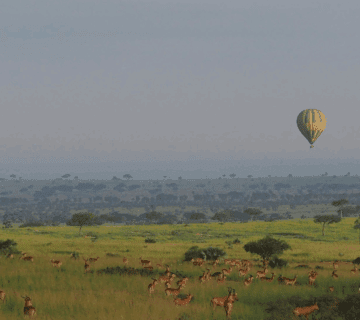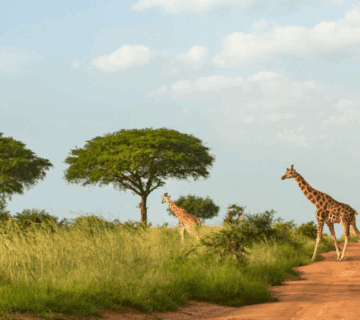What Animals Can I See in Rwanda’s Akagera National Park?
Imagine standing on the sun-kissed savannahs of Rwanda, where the golden light of dawn filters through acacia trees, and the wild calls of nature echo across the plains. Akagera National Park isn’t just a safari destination it’s a sanctuary where nature thrives, stories unfold, and the soul finds peace. It’s one of those rare places where your spirit feels connected to something greater, something untamed and magnificently beautiful.
If you’re wondering what animals await you in Rwanda’s Akagera National Park, prepare to be amazed. This park is a living canvas painted with Africa’s iconic wildlife from the regal lion to the elusive leopard, from gentle giraffes to herds of elephants, all moving in harmony with the rhythm of the wilderness.
A Quick Introduction to Akagera National Park
Located in the eastern part of Rwanda, near the Tanzanian border, Akagera National Park spans approximately 1,122 square kilometers. It’s Rwanda’s largest protected wetland and the only Big Five safari destination in the country.
Named after the Akagera River that meanders along its eastern boundary, the park features an extraordinary mix of landscapes: open grasslands, rolling hills, swamp-fringed lakes, and dense woodlands. This unique ecosystem supports a rich diversity of wildlife that rivals even the more famous parks in East Africa.
Once devastated by decades of conflict and poaching, Akagera is now a shining example of successful conservation. Thanks to efforts led by the Rwanda Development Board and African Parks, Akagera has been transformed into a thriving wildlife haven, making it one of Africa’s most exciting conservation success stories.
So, what animals can you expect to see here? Let’s dive into the magnificent wildlife of Akagera.
1. The Big Five: A Thrilling Safari Experience
Akagera is one of the few places in Africa where you can see the Big Five in a single park. These include:
Lions
Lions were reintroduced to Akagera in 2015 after a 20-year absence, and their population has been steadily growing. Hearing the distant roar of a lion at night or catching a glimpse of a pride lounging in the grass is an unforgettable moment.
African Elephants
Elephants are among the most prominent residents in Akagera. You’ll likely see them near the lakes or lumbering through the bush. Watching a matriarch lead her herd with quiet authority is a humbling experience.
Buffaloes
Often seen in large herds, buffaloes roam freely across the park. These massive, muscular animals may seem docile, but they’re known for their strength and resilience.
Leopards
Leopards are elusive and often shy, but with a bit of luck and a skilled guide, you might spot one lounging on a tree branch or slinking through the underbrush during a night drive.
Rhinos
Both black and white rhinos have been reintroduced to Akagera, making it a fully-fledged Big Five destination. They’re typically seen in more remote or protected areas, and their presence symbolizes hope for endangered species conservation in Rwanda.
2. Giraffes: The Graceful Giants
Akagera is home to a healthy population of Masai giraffes, reintroduced in the 1980s. Their towering frames and gentle movements are a sight to behold. Watching them gracefully nibble acacia leaves or glide across the savannah feels like witnessing a dance choreographed by nature itself.
3. Zebras and Antelopes: The Heartbeat of the Plains
Large herds of plains zebras add a splash of black and white to Akagera’s golden grasslands. Their distinctive stripes and social behavior make them a favorite among photographers and wildlife lovers.
But they’re not alone.
The park teems with a variety of antelopes, including:
Impala
Topi
Eland (Africa’s largest antelope)
Bushbuck
Waterbuck
Oribi
Roan antelope (rare and majestic)
These antelopes are the silent guardians of the plains, always alert, always moving, and always mesmerizing to watch.
4. Hippopotamuses and Crocodiles: Lords of the Water
Akagera is home to over 10 lakes, including Lake Ihema and Lake Shakani, which are hotspots for aquatic wildlife.
Hippos lounge in the shallows, often submerged with just their eyes peeking out.
Nile crocodiles bask on the shores, their prehistoric presence adding a sense of awe and respect for the balance of nature.
A boat safari on Lake Ihema offers a front-row seat to this watery kingdom an experience that combines serenity with wild spectacle.
5. Birds: A Paradise for Birdwatchers
With over 500 bird species, Akagera is a birdwatcher’s dream.
Some of the notable species include:
African fish eagle
Grey crowned crane (Rwanda’s national bird)
Shoebill stork (rare and highly sought-after)
Papyrus gonolek
Goliath heron
Southern ground hornbill
Saddle-billed stork
Whether you’re an avid birder or a casual observer, the melodies, colors, and aerial acrobatics of Akagera’s birds will enchant you.
6. Monkeys and Baboons: Playful Primate Encounters
While Akagera isn’t known for primates like Volcanoes National Park, it does host several species of monkeys, including:
Vervet monkeys
Olive baboons
Blue monkeys
These curious creatures are often seen near wooded areas or even around lodges, providing endless entertainment with their antics.
7. Nocturnal Wildlife: Creatures of the Night
Night game drives in Akagera open up a whole new world. With the help of spotlights and expert guides, you might spot:
Bush babies
Civets
Servals
Porcupines
Aardvarks
The African night has its own rhythm—mysterious, quiet, and thrilling. It’s during these hours that the park whispers its secrets.
Planning Your Visit: Tips for a Memorable Safari
Here are some helpful insights for planning your Akagera safari:
Best Time to Visit: June to September (dry season) offers the best wildlife viewing. However, Akagera is open year-round.
Safari Activities: Game drives, boat safaris, night drives, bird watching, and behind-the-scenes conservation tours.
Accommodation: Options range from luxury lodges like Magashi Camp, to mid-range options like Akagera Game Lodge, and camping for the adventurous.
Getting There: Akagera is about a 2.5-hour drive from Kigali. You can self-drive or book through a tour operator.
Why Akagera Feels Different
While many African parks boast the Big Five and stunning landscapes, Akagera offers something more intimate, more personal. It’s not crowded. You won’t be jockeying for position with dozens of other vehicles. Instead, you’ll often find yourself alone with the animals, with the vast beauty of Rwanda wrapping around you like a warm blanket.
There’s something powerful about watching the sunrise over a misty lake, hearing the call of a fish eagle, and knowing that this place was once on the brink of collapse and is now thriving. Akagera’s story mirrors Rwanda’s journey: resilience, renewal, and rebirth.
Final Thoughts
So, what animals can you see in Rwanda’s Akagera National Park? The better question might be what can’t you see?
From the mighty lion to the rare shoebill, from towering giraffes to elegant elands, Akagera is a sanctuary of surprises. It’s a place where every rustle in the grass holds a secret, and every game drive offers a new chapter in nature’s unfolding story.
Whether you’re a first-time visitor or a seasoned safari-goer, Akagera invites you to slow down, open your heart, and reconnect with the wild.
Come for the animals. Stay for the magic. Leave forever changed.

